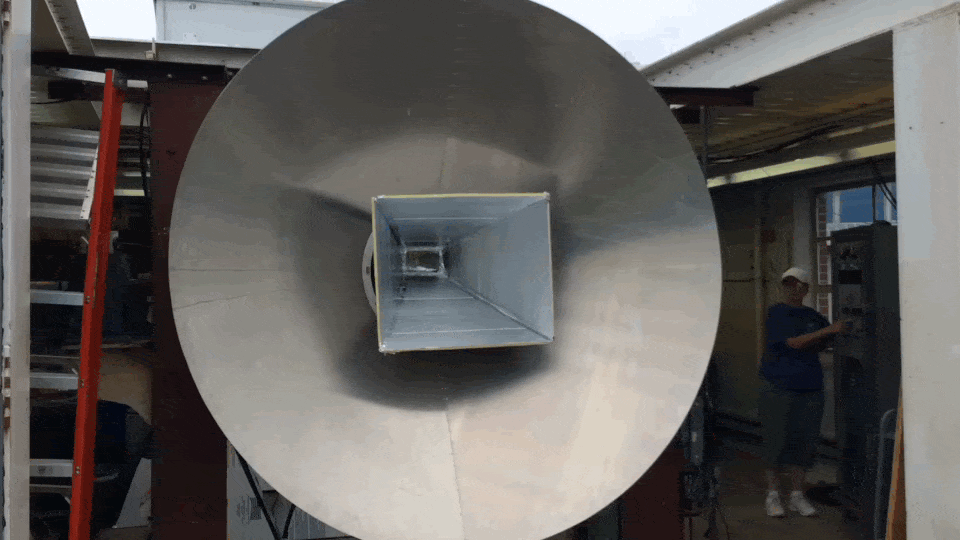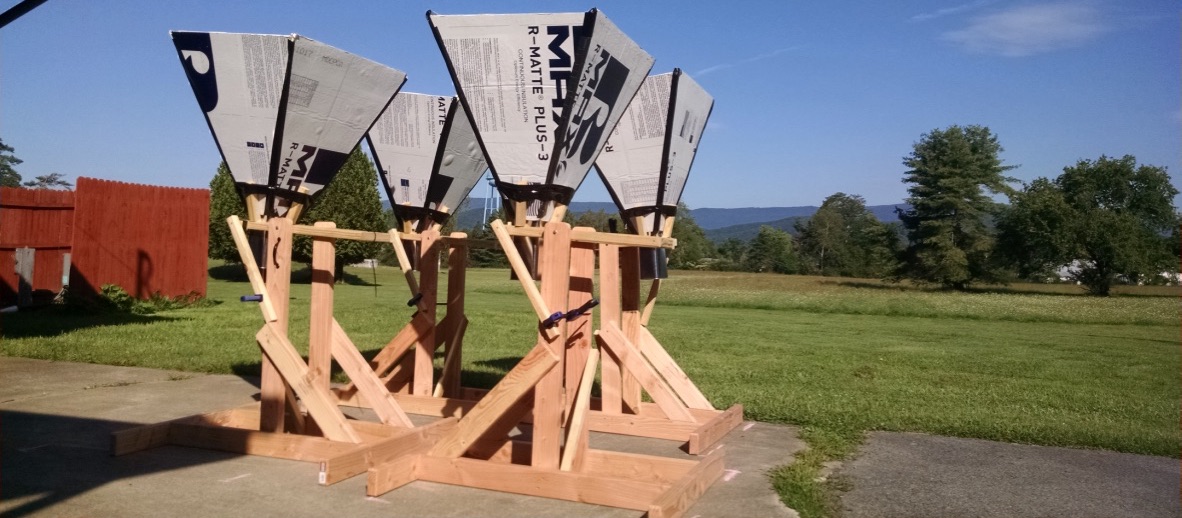
In the Classroom
Introducing the students of the PING Camp to concepts of Digital Signal Processing

This program was attended by a group of nine excellent highly motivated teachers from all over the country. They teach science subjects in classrooms of grade 8 through 12. The participants included:
One of the aims of this program is to prepare teachers to implement Digital Signal Processing (DSP) projects with their students, exposing them to exciting STEM career opportunities. To its end, the first four weeks of the program involved the teachers attending daily lectures establishing a foundation in astronomy and DSP.
 Astronomy topics covered included celestial sphere, astronomical time, solar time, Kepler's laws, H-R diagram, galaxies, and cosmology topics such as dark matter and galaxy rotation curves. The digital signal processing lecture has been modeled after an undergraduate DSP course to help the teachers establish a thorough foundation in topics from signal basics to fast Fourier transforms.
Astronomy topics covered included celestial sphere, astronomical time, solar time, Kepler's laws, H-R diagram, galaxies, and cosmology topics such as dark matter and galaxy rotation curves. The digital signal processing lecture has been modeled after an undergraduate DSP course to help the teachers establish a thorough foundation in topics from signal basics to fast Fourier transforms.
 Lectures were followed by daily laboratory sessions. These focused on a systematic application of rather abstract DSP concepts in a tangible sense. This is made possible through software defined radio. The tool being used is GNURadio. GNURadio is free and open-source software framework to help develop software defined radio and signal processing applications. It can be used with readily-available low-cost external radio hardware. The structured labs end with the teachers developing their own software spectrometer a vital component of every radio telescope system.
Lectures were followed by daily laboratory sessions. These focused on a systematic application of rather abstract DSP concepts in a tangible sense. This is made possible through software defined radio. The tool being used is GNURadio. GNURadio is free and open-source software framework to help develop software defined radio and signal processing applications. It can be used with readily-available low-cost external radio hardware. The structured labs end with the teachers developing their own software spectrometer a vital component of every radio telescope system.
 Assembling the LNA
Assembling the LNA
The teachers additionally built a radio telescope from scratch. This involved assembling a low noise amplifier by soldering really small components and building a horn antenna. The horn design is such that it could be built using materials and tools one could purchase at a local hardware store. The teachers built horn antennas in the industrial design workshop at West Virginia University.
 Constructing the Horn
Constructing the Horn
The group was able to successfully assemble the LNA involving really small components (left) with some having soldered for the very first time. The horn construction was expertly executed as an assembly line by the teachers. Along with the spectrometer, the LNA and the horn each teacher had a working radio telescope by the end of the four weeks in Morgantown.
The horn antennas were tested in Morgantown and were taken to the Green Bank Observatory.
 Testing the LNAs in the RF testing room at WVU
To ensure proper functioning of the telescopes several tests were performed at WVU. The performance of the LNAs was tested in our lab at WVU. The noise figure was testing inside the Faraday cage in the RF lab. A trial run observing run using one the horn antenna was conducted on the roof of the Engineering Sciences building at WVU.
Testing the LNAs in the RF testing room at WVU
To ensure proper functioning of the telescopes several tests were performed at WVU. The performance of the LNAs was tested in our lab at WVU. The noise figure was testing inside the Faraday cage in the RF lab. A trial run observing run using one the horn antenna was conducted on the roof of the Engineering Sciences building at WVU.
 Initial Observing with the horn on the roof of the Engineering Sciences Building at WVU
Initial Observing with the horn on the roof of the Engineering Sciences Building at WVU

 Mapping the Galaxy. Reber Telescope in the background
Mapping the Galaxy. Reber Telescope in the background
 The 40foot Dish
The 40foot Dish Getting measurements to determine the system temperature of the horn
The next two weeks of the program were spent at the Green Bank Observatory. The teachers went through a full suite of outreach activities planned by the the Green Bank Observatory. This included training on using the 40 Foot outreach telescope. They even tapped into the signal from the 40 foot. The signal from the 40 foot was routed through the SDR dongle and the GNU Radio spectrometer they designed at WVU. The teacher even had the opportunity to use the intermediate frequency signal from the Green Bank Telescope and use the spectrometer comparing the data to that from the VEGAS back end.
Getting measurements to determine the system temperature of the horn
The next two weeks of the program were spent at the Green Bank Observatory. The teachers went through a full suite of outreach activities planned by the the Green Bank Observatory. This included training on using the 40 Foot outreach telescope. They even tapped into the signal from the 40 foot. The signal from the 40 foot was routed through the SDR dongle and the GNU Radio spectrometer they designed at WVU. The teacher even had the opportunity to use the intermediate frequency signal from the Green Bank Telescope and use the spectrometer comparing the data to that from the VEGAS back end.
Primarily, time was spent planning and executing observations using the horn antenna. The teachers devised their own observing plan to map the whole sky. Moreover, we used the state of facilities available on site to further test and improve the horn antenna. Accurate hot-cold measurements (left) were taken to determine the gains and the system temperature of the horn antenna system. Attempts were made to improve the antenna probe and the LNA in the electronics lab at GBO. Furthermore, workshops were conducted to help reduce the data collected using the spectrometer.
The DSPiRA trip coincided with the PING summer camp. This allowed the teachers utilize their research experience to develop and execute lesson plans. Digital signal processing activities targeted towards school children were conducted.

Introducing the students of the PING Camp to concepts of Digital Signal Processing

Every module followed by a group exercise.

An exercise in sampling and quantization, the cornerstone of digital signal processing


Basic Exercise on Digital Encoding

An activity on filtering outside the Green Bank Science Center
This project not only provides for teachers with cutting-edge research experience in engineering and radio astronomy but also opens a lot of avenues for the future of amateur radio astronomy. With cheap technology and design using only easily accessible materials like home insulation, paint thinner cans, anybody with enough inclination can explore the wonderful field of radio astronomy. Moreover, this would allow teachers build more telescopes at their home institutions with minimal logistical burdens.
Sophisticated experiments can be performed with these simple systems like an aperture array(below) could be experimented with to explore possible time domain radio astronomy applications.

If you're an enthusiastic student, whether graduate or undergraduate, eager to dive into exciting scientific endeavors, don't hesitate to reach out. Send an email to us and let's explore some hands-on science together!
Our Lab is located at the Advanced Engineering Research Building (AERB) in Room 304 on the WVU Evansdale Campus.
© WVU.RAIL